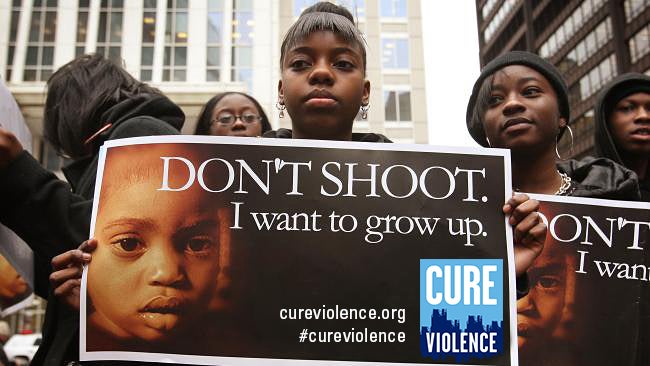‘Violence is contagious’: Treating shootings like disease
Listen
How can we have a conversation about gun violence? Some people say to treat it like a disease. (Courtesy of Cure Violence)
Could we reduce gun violence using the same methods used in halting epidemics such as AIDS or Ebola?
Gary Slutkin is a Chicago epidemiologist and professor of public health, who spent years fighting the AIDS epidemic in Africa. He’s taken many of the lessons learned there to his organization called “Cure Violence.”
One of the organization’s most basic principles is that violence spreads just like a contagious disease. People copy behaviors, and violence begets more violence.
“This is primarily a health problem, people who are doing it have acquired a social or psychological disease,” explained Slutkin. “The health sector knows very well how to look for and detect rare events, it’s a sub specialty called disease or epidemic control.”
He says in this approach, outreach workers are used, which is what his organization does – they are called interrupters.
Slutkin says it doesn’t matter what motivates the violence – whether it’s politically motivated, a workplace dispute, or a terrorist attack.
“I don’t know what the reason is that people want to know the reason,” he said. “People are doing what they think will get them some kind of approval from their friends, group, or the internet space.”
The “Cure Violence” model with community interrupters has been used in many countries and across the U.S., and Slutkin says it works both with gang related violence and seemingly more random shootings.
“Nothing is random,” said Slutkin. “For example with school shootings, outreach can be designed where people can check out what’s going on in dorms and classes. Who is feeling socially isolated? Who are people worried about? Maybe they haven’t heard from them.”
Well-done outreach could catch people who are planning violence, or who are at risk for committing violent acts.
Slutkin says his organization’s approach reduces violence dramatically – for example, three neighborhoods in Baltimore where his organization is active have gone over a year without a shooting or killing. He says eight interrupters are working in that area with a population of about 40,000 people. They have been trained to understand who is at the highest risk, and intervene in those groups.
“This all gets mapped out, it’s a specialty, and some of the greatest achievements in human kind have been because of public health,” said Slutkin.
WHYY is your source for fact-based, in-depth journalism and information. As a nonprofit organization, we rely on financial support from readers like you. Please give today.




